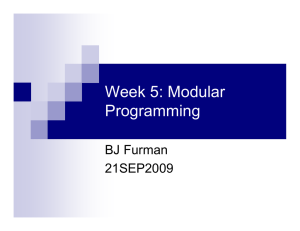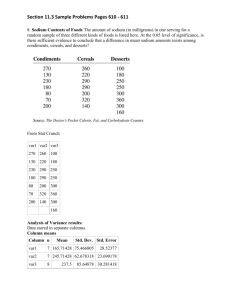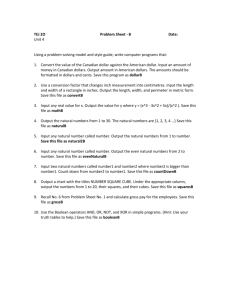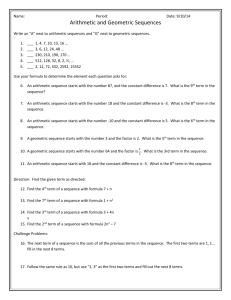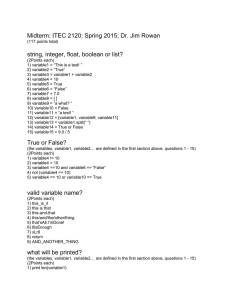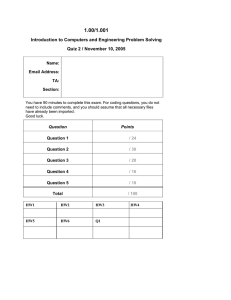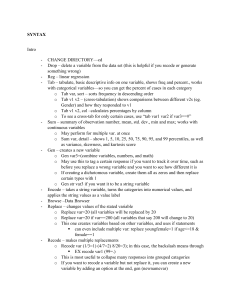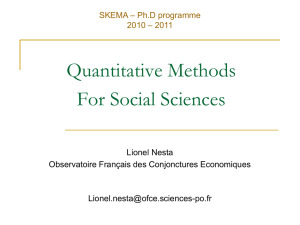ICT102 Practical 3 - Nick Circosta Online
advertisement
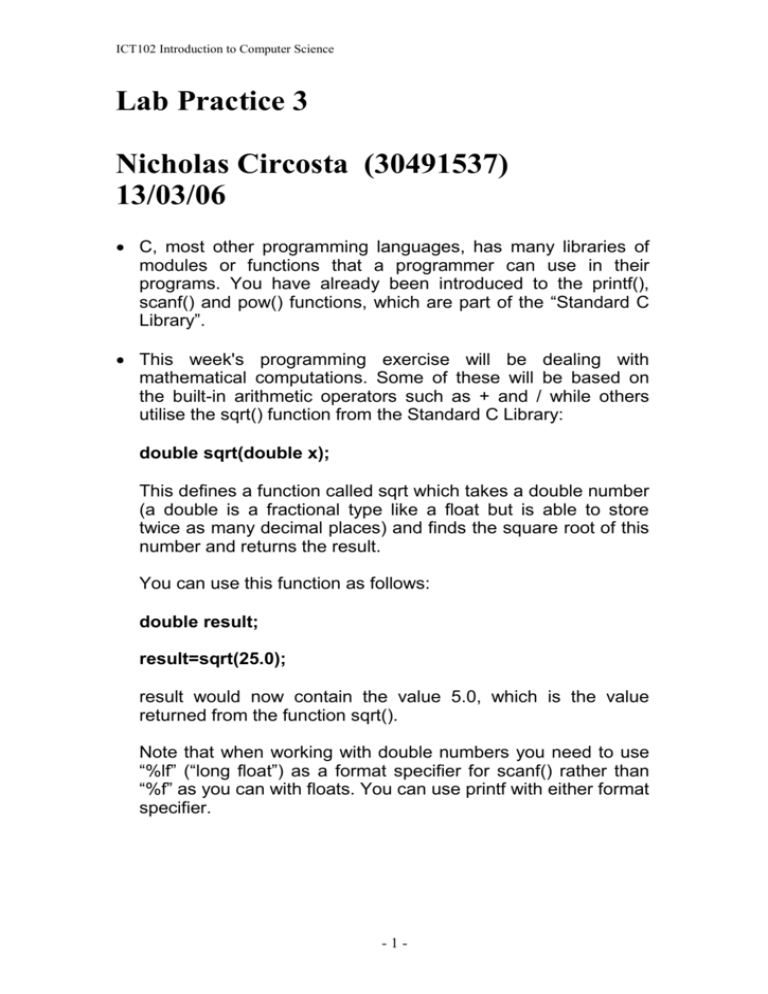
ICT102 Introduction to Computer Science Lab Practice 3 Nicholas Circosta (30491537) 13/03/06 C, most other programming languages, has many libraries of modules or functions that a programmer can use in their programs. You have already been introduced to the printf(), scanf() and pow() functions, which are part of the “Standard C Library”. This week's programming exercise will be dealing with mathematical computations. Some of these will be based on the built-in arithmetic operators such as + and / while others utilise the sqrt() function from the Standard C Library: double sqrt(double x); This defines a function called sqrt which takes a double number (a double is a fractional type like a float but is able to store twice as many decimal places) and finds the square root of this number and returns the result. You can use this function as follows: double result; result=sqrt(25.0); result would now contain the value 5.0, which is the value returned from the function sqrt(). Note that when working with double numbers you need to use “%lf” (“long float”) as a format specifier for scanf() rather than “%f” as you can with floats. You can use printf with either format specifier. -1- ICT102 Introduction to Computer Science 1. (Problem Solving/Design Exercise) Create an algorithm for a program that reads in two double numbers and uses those numbers to calculate and display the arithmetic mean, geometric mean, and harmonic mean. (hint: the arithmetic mean is the sum of the two numbers divided by two, the geometric mean is the square root of their product, and the harmonic mean is the 2 divided by the sum of their reciprocals (1/x)). Now find the largest of the three values and identify which of the means it is. Use the space below or a separate piece of paper. -2- ICT102 Introduction to Computer Science Print “Please Enter your first number” Store -> Number1 Print “Please enter your second number Store -> number2 arthmean = (number1+number2) / 2 If number1 or number2 < 0 negInput = 1 Else geomean = Sqrt(number1*number2) harmean = 2 / ((1/number1) + (1/number2)) If arthmean > geomean && arthmean > harmean Print “Arithmetic mean is the biggest at” & arthmean Else if harmean > geomean && harmean > arthmean Print “Harmean mean is the biggest at” & harmean Else if geomean > harmean && geomean > arthmean Print “geomean mean is the biggest at” & geomean else Print “They are all the same value” & geomean 2. Test Data and Desk Checking -3- ICT102 Introduction to Computer Science Draw up a table with separate columns for the two double numbers being read in, the results of each mean calculation and also which mean result is the largest. For example: n1 n2 1 1 1 2 50 100 -5 Arithmetic Mean 1 Harmonic Mean Geometric Mean Largest 1 1 geometric 1.3 1.42 arithmetic 75 66.6 70.71 arithmetic -5 -5 -5 N arithmetic -5 -4 -4.5 -4.44 N arithmetic 5 -5 N N N N 1.5 Now identify suitable test values for n1 and n2, the two numbers being read in. These values should test different possible scenarios and should test what are sometimes called “boundary conditions” which means situations where the result is likely to change. For example, if the program gives correct results for the values (10, 20) then it seems reasonable to assume it will give correct results for (15, 25) so it is probably unnecessary to test both of these sets. However, you should test other possible combinations. For example, large positive numbers, negative numbers, whole numbers and fractional numbers (both with a whole part and without, e.g., 0.5 vs 1.5). You may also want to test various combinations of these although you can probably safely assume that the order of the values is not important. Note that the table given above probably does not have sufficient rows for covering an adequate range of test data and should be expanded as required! 3. (Programming Exercise) Implement the algorithm into a C program. Although you have a complete algorithm, you may find the easiest way to approach implementing this in a program is to take an incremental approach. For example, you could implement the first part of the program which reads the values and calculates the means. After verifying that this is working correctly using -4- ICT102 Introduction to Computer Science your desk check data you can then extend your program to report which of the three means is the largest. You will need to include the math header file by having the line #include <math.h> somewhere at the top of your program. What to Submit 1. Your algorithm, either legibly handwritten or typed (This week). 2. Your desk check data and results. 3. Your C program (next week). Arithmetic Operators Operator Use Description + var1 + var2 Adds var1 and var2 - var1 - var2 Subtracts var2 from var1 * var1 * var2 Multiplies var1 by var2 / var1 / var2 Divides var1 by var2 var1 % var2 Computes the remainder of dividing var1 by var2 % When combining operators remember that precedence becomes important. The best thing to do is to think carefully about the order in which you want the operations to occur and use parentheses (ordinary brackets) to clearly indicate this. This has the advantage of meaning that you never have to worry about all the different precedence rules and also that your intention in terms of how the code should behave is clearly documented. -5-
